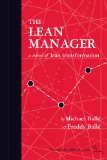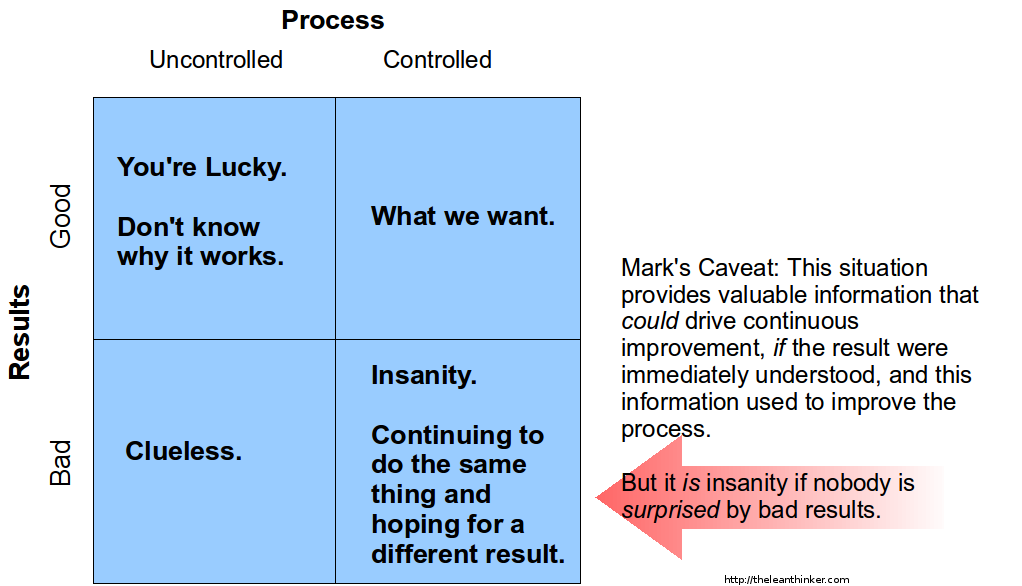I have come to expect very little from most airlines, especially for the parts of the “service” that doesn’t involve actually sitting in the airplane. Still, some airlines make their policies more clear than others. Alaska Air, for example, is explicitly clear that I can hold a reservation for 24 hours and cancel with no penalty. They say so on the web site during the online booking process.
NWA (soon to be Delta), on the other hand, is somewhat less transparent. Thus, I had to call the “Elite Reservations” number, and talk to a human being to confirm the 24 hour cancellation policy. Of course I could have gotten this from their web site, I suppose. Maybe it is somewhere in here. Could this be any less clear if had been deliberately obfuscated? What purpose is served by serving up confusing information in the most difficult-as-possible to read format? How does this help their business? Or do they feel they have to trick their customers into buying the product?
I often wonder about things like this. Some companies just seem to get a thrill out of making it difficult for their customers to do business with them.
Penalties
CHANGES ANY TIME CHARGE USD 150.00 FOR REISSUE. NOTE – DOMESTIC TICKETS ARE VALID FOR ONE YEAR FROM DATE OF ORIGINAL PURCHASE. THE TICKET MUST BE EXCHANGED AND THE NEW ORIGINATION DATE MUST BE WITHIN ONE YEAR OF THE ORIGINAL PURCHASE DATE DESIGNATED ON THE ORIGINAL TICKET. . TICKETS MUST BE REISSUED WHEN ANY VOLUNTARY CHANGE IS MADE. THE NONREFUNDABLE VALUE SHOULD BE PLACED IN THE ENDORSEMENT BOX ON THE REISSUE TICKET . IF MULTIPLE CHANGES ARE MADE AT THE SAME TIME ONLY ONE CHANGE FEE WILL APPLY. IF FARES WITH DIFFERENT CHANGE FEES ARE COMBINED ON THE SAME TICKET THE HIGHEST FEE OF ALL THE CHANGED FARE COMPONENTS WILL APPLY. . GDPR – GUARANTEED DAY OF PURCHASE RULE DECREASE IN FARE AFTER TICKET PURCHASE. . IF A DECREASE OCCURS AFTER A TICKET IS PURCHASED AND PRIOR TO ANY TRAVEL ON THE TICKET OR A NEW FARE FOR WHICH THE PASSENGER QUALIFIES BECOMES EFFECTIVE THE DIFFERENCE IN FARE MAY BE CREDITED. FOR COMPLETE DETAILS SEE PARAGRAPH VI BELOW. . I. PRIOR TO DEPARTURE A. CHANGES TO DEPARTING FLIGHT ARE PERMITTED FOR APPLICABLE CHANGE FEE PROVIDED THE CHANGE IS MADE TO THE SAME ORIGIN/DESTINATION AND SAME TICKETED TRAVEL DATE AND SAME BOOKING CLASS. . B. CHANGES TO DEPARTING FLIGHT INVOLVING A CHANGE TO ORIGIN/DESTINATION OR DIFFERENT TICKETED TRAVEL DATE OR BOOKING CLASS ARE NOT PERMITTED. SEE CANCELLATIONS . II. PRIOR TO DEPARTURE – CHANGES TO CONTINUING/ RETURN FLIGHTS WHEN THERE IS NO CHANGE TO ORIGIN/DESTINATION OR STOPOVERS. . A. CONTINUING/RETURN FLIGHTS MAY BE CHANGED TO A LATER DATE FOR THE CHANGE FEE WITHOUT REGARD TO THE ADVANCE RSVN REQUIREMENTS PROVIDED THE CHANGE MEETS ALL OTHER FARE RULES. . CONTINUING/RETURN FLIGHTS MAY BE CHANGED TO AN EARLIER DATE FOR THE CHANGE FEE PROVIDED THE CHANGE MEETS ALL FARE RULES. THE ORIGINAL TICKET ISSUE DATE MAY BE USED TO MEASURE THE ADVANCE PURCHASE REQUIREMENT. . B. IF A CHANGE IS MADE TO A BLACKOUT DATE OR THE CHANGE VIOLATES THE DAY/ROUTING/ FLIGHT /SEASONALITY/TRAVEL DATES OR BOOKING CODE REQUIREMENTS TRY THE FOLLOWING OPTIONS . B.1 RE-PRICE THE CONTINUING/RETURN PORTION WITH FARES IN EFFECT ON THE DATE THE ORIGINAL TICKET WAS ISSUED. ANY DIFFERENCE IN FARES PLUS THE APPLICABLE CHANGE FEE SHOULD BE COLLECTED. IF THE REPRICE RESULTS IN A LOWER FARE NO RESIDUAL VALUE APPLIES AND THE FULL CHANGE FEE SHOULD BE COLLECTED. . B.2 THE ENTIRE TICKET SHOULD ALSO BE REPRICED WITH CURRENT FARES. ANY DIFFERENCE IN FARES PLUS THE CHANGE FEE SHOULD BE COLLECTED. IF THE TICKET PRICE IS LOWER WITH CURRENT FARES THE DIFFERENCE IN FARES LESS THE CHANGE FEE MAY BE CREDITED TO THE PASSENGER IN THE FORM OF A NONREFUNDABLE MCO. THE MCO MUST BE EXCHANGED WITHIN ONE YEAR OF THE MCO ISSUE DATE. . B.3 IF THE RESULTS OF B.1 – B.2 ABOVE RESULT IN MULTIPLE PRICING SOLUTIONS THE LOWEST SOLUTION WOULD APPLY. . III. PRIOR TO DEPARTURE – CHANGES TO CONTINUING/ RETURN FLIGHTS WHEN THERE IS A CHANGE TO ORIGIN/DESTINATION OR STOPOVERS. . A. REPRICE THE CONTINUING/RETURN PORTION WITH A CURRENT FARE. ANY DIFFERENCE IN FARES PLUS THE APPLICABLE CHANGE FEE SHOULD BE COLLECTED. IF THE REPRICE RESULTS IN A LOWER FARE THE DIFFERENCE IN FARES LESS THE CHANGE FEE MAY BE RETURNED IN THE FORM OF A NONREFUNDABLE MCO. THE MCO MUST BE EXCHANGED WITHIN ONE YEAR OF THE MCO ISSUE DATE . B. THE ENTIRE TICKET SHOULD BE REPRICED WITH CURRENT FARES. ANY DIFFERENCE IN FARES PLUS THE CHANGE FEE SHOULD BE COLLECTED. IF THE REPRICE RESULTS IN A LOWER FARE THE DIFFERENCE IN FARES LESS THE CHANGE FEE MAY BE RETURNED IN THE FORM OF A NONREFUNDABLE MCO. THE MCO MUST BE EXCHANGED WITHIN ONE YEAR OF THE MCO ISSUE DATE. . IV. AFTER DEPARTURE – CHANGES TO CONTINUING/RETURN FLIGHT WHEN THERE IS NO CHANGE TO ORIGIN/ DESTINATION OR STOPOVERS. . A. CONTINUING/RETURN FLIGHTS MAY BE CHANGED TO A LATER DATE FOR THE CHANGE FEE WITHOUT REGARD TO THE ADVANCE RSVN REQUIREMENTS PROVIDED THE CHANGE MEETS ALL OTHER FARE RULES. . CONTINUING/RETURN FLIGHTS MAY BE CHANGED TO AN EARLIER DATE FOR THE CHANGE FEE PROVIDED THE CHANGE MEETS ALL FARE RULES. THE ORIGINAL TICKET ISSUE DATE MAY BE USED TO MEASURE THE ADVANCE PURCHASE REQUIREMENT. . B. IF A CHANGE IS MADE TO A BLACKOUT DATE OR THE NEW DATE VIOLATES THE DAY/TIME/ROUTING /TIME/FLIGHT/SEASONALITY/TRAVEL DATES OR BOOKING CODE REQUIREMENTS TRY THE FOLLOWING OPTIONS. . B.1 THE CONTINUING/RETURN PORTION SHOULD BE RE-PRICED WITH AN APPLICABLE FARE IN EFFECT ON THE DATE THE ORIGINAL TICKET WAS ISSUED. ANY DIFFERENCE IN FARES PLUS THE CHANGE FEE SHOULD BE COLLECTED. IF THE REPRICE RESULTS IN A LOWER FARE NO RESIDUAL VALUE WILL APPLY AND THE FULL CHANGE FEE SHOULD BE COLLECTED. . B.2 REPRICE THE CONTINUING/RETURN PORTION WITH A CURRENT FARE. ANY DIFFERENCE IN FARES PLUS THE APPLICABLE CHANGE FEE SHOULD BE COLLECTED. IF THE REPRICE RESULTS IN A LOWER FARE THE DIFFERENCE IN FARES LESS THE CHANGE FEE MAY BE RETURNED IN THE FORM OF A NONREFUNDABLE MCO. THE MCO MUST BE EXCHANGED FOR WITHIN ONE YEAR OF THE MCO ISSUE DATE. . B.3 IF THE RESULTS OF B.1 – B.2 ABOVE RESULT IN MULTIPLE PRICING SOLUTIONS THE LOWEST SOLUTION WOULD APPLY. . V. AFTER DEPARTURE – CHANGES TO CONTINUING/ RETURN FLIGHT WHEN THERE IS A CHANGE TO ORIGIN/DESTINATION OR STOPOVERS. . A. REPRICE THE CONTINUING/RETURN PORTION WITH A CURRENT FARE. ANY DIFFERENCE IN FARES PLUS THE APPLICABLE CHANGE FEE SHOULD BE COLLECTED. IF THE REPRICE RESULTS IN A LOWER FARE THE DIFFERENCE IN FARES LESS THE CHANGE FEE MAY BE RETURNED IN THE FORM OF A NONREFUNDABLE MCO. THE MCO MUST BE EXCHANGED WITHIN ONE YEAR OF THE MCO ISSUE DATE. . B. IF THE CHANGE IS TO A CO-TERMINAL THE DIFFERENCE BETWEEN THE APPLICABLE FARES MUST BE COLLECTED IN ADDITION TO THE CHANGE FEE. FOLLOW- THE POLICIES LAID OUT ABOVE ON HOW TO RECALCULATE THE DIFFERENCE IN FARES. . VI. GDPR – GUARANTEED DAY OF PURCHASE RULE . DOMESTIC PASSENGER TRANSPORTATION IS SUBJECT TO RULES/FARE/ROUTINGS AND CHARGES IN EFFECT ON THE DATE/TIME THE TICKET IS ISSUED/PTA PURCHASED UNLESS SPECIFIED IN THE FARE RULES. . DECREASE IN FARE AFTER PURCHASE . IF A DECREASE OCCURS AFTER A TICKET IS PURCHASED AND PRIOR TO TRAVEL ON THE TICKET OR A NEW FARE FOR WHICH THE PASSENGER QUALIFIES BECOMES EFFECTIVE THE DIFFERENCE IN FARES WILL BE CREDITED PROVIDED . 1. THERE ARE NO CHANGES TO ORIGIN/DESTINATION/ STOPOVER POINTS/FLIGHTS/DATES. . 2. ALL CONDITIONS OF THE NEW/REDUCED FARE MUST BE MET. THE ORIGINAL TICKET DATE OF ISSUE MAY NOT BE USED TO SATISFY THE ADVANCE RESERVATION/TICKETING REQUIREMENTS. THE BOOKING CODE OF THE NEW/REDUCED FARE MAY DIFFER FROM THE BOOKING CODE ON THE ORIGINAL TICKET. . . FOR TICKETS ISSUED ON/BEFORE 11NOV08 THE PASSENGER WILL RECEIVE A NONREFUNABLE MCO LESS A 50.00USD ADMINISTRATIVE SERVICE FEE. . FOR TICKETS ISSUED ON/AFTER 12NOV08 – THE PASSENGER WILL RECEIVE A NONREFUNDABLE MCO LESS A 150.00USD ADMINISTRATIVE SERVICE FEE . THE MCO CAN BE USED FOR FUTURE TRAVEL PURCHASE. THE MCO MUST BE EXCHANGED FOR A TICKET WITHIN ONE YEAR OF THE MCO ISSUE DATE. CANCELLATIONS TICKET IS NON-REFUNDABLE. NOTE – 1.CUSTOMERS FIRST POLICY. . 1. WHEN RESERVATIONS ARE MADE AND TICKETS ARE PURCHASED ON THE SAME DAY REFUNDS EQUIVALENT TO THE AMOUNT PAID WILL BE PERMITTED UP TO 1 DAY AFTER THE TICKET IS PURCHASED AT NO CHARGE. ANY CERTIFICATE OFFER WILL BE DEEMED USED AND WILL NOT BE REPLACED. 2. FARES ARE SUBJECT TO CHANGE AND NOT GUARANTEED UNTIL A TICKET IS PURCHASED. . B.WHOLLY UNUSED NONREFUNDABLE TICKET POLICY. . A WHOLLY UNUSED NONRFND TKT MAY BE APPLIED TOWARDS THE PURCHASE OF A NW/KL DOMESTIC/ INTERNATIONAL FARE/TICKET. -PROVIDED TRAVEL ON THE NEW TICKET ORIGINATES WITHIN 1 YEAR OF THE ORIGINAL PURCHASE DATE AND THE TICKET IS EXCHANGED NO LATER THEN 365 DAYS AFTER THE ORIGINAL TICKET ISSUE DATE. . -ANY NONREFUNDABLE VALUE IS CARRIED FOWARD IN ALL SUBSEQUENT REISSUES. THE NONREFUNDABLE VALUE SHOULD BE PLACED IN THE ENDORSEMENT BOX ON THE REISSUE TICKET. . -LIMIT OF ONE TKT MAY BE APPLIED TOWARDS A NEW TICKET. -APPLICABLE CHANGE FEE APPLIES. . C. TICKET VALIDITY AND CANCELLATION FEE . 1. TICKETS WILL BECOME INVALID/EXPIRED 366 DAYS AFTER THE DATE OF THE FIRST UNUSED COUPON AND MAY NOT BE USED OR EXCHANGED FOR TRANSPORTATION AFTER THAT TIME AND DATE. . 2. ONCE THE TICKET BECOMES INVALID – THE FARE AND RELATED TAXES AND FEES WILL BE REFUNDED. SIMULTANEOUSLY WITH THE REFUND NW WILL IMPOSE A CANCELLATION FEE EQUAL TO 100 PERCENT OF ALL AMOUNTS COLLECTED BY NW FOR ISSUANCE OF THE TICKET – INCLUDING – THE FARE AND APPLICABLE TAXES/FEES AND ANY OTHER CHARGES. – SEE GENERAL TARIFF RULE 105 – . D. EXCEPTION TO FEE COLLECTION. . IN THE EVENT OF THE DEATH OF THE PSGR A REFUND IS PERMITTED. THE CHANGE FEE WILL BE WAIVED.
This, of course, is the example of communications they let the customers actually see on their “award winning web site.” Therefore, I have to assume this is communication at its very best. I wonder what the pilots and crew have to deal with – and how much it distracts them from getting the job done safely and efficiently.

